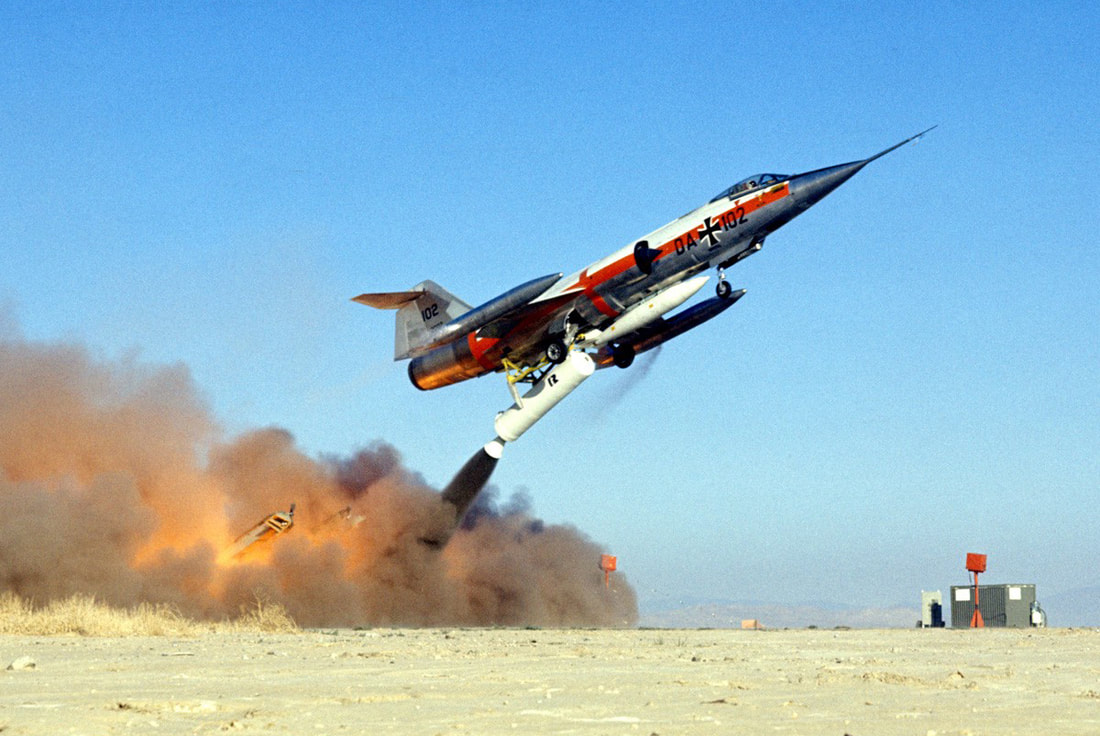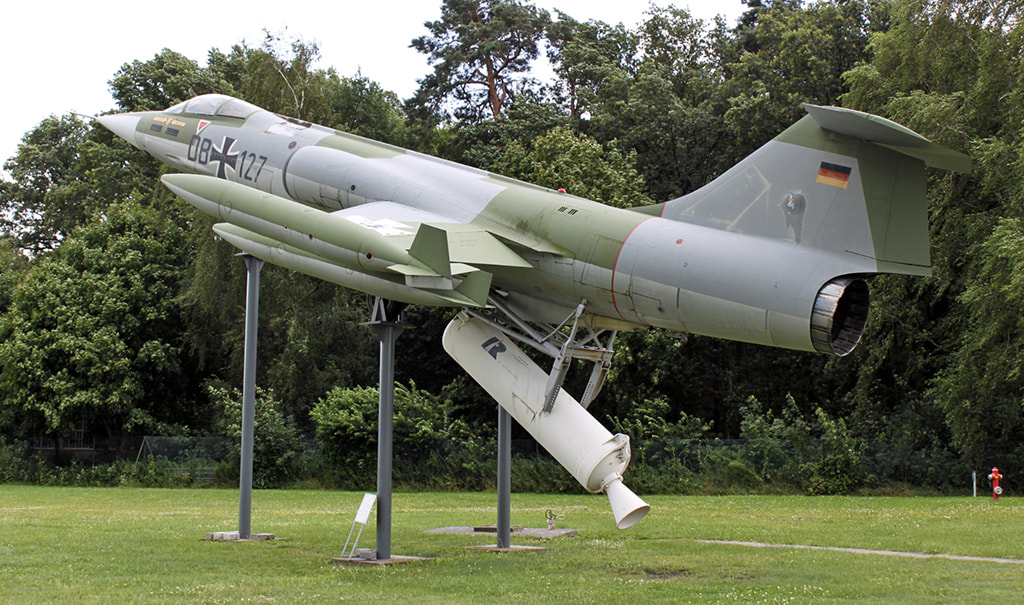The origin of “Zero Length Launch”, often called “ZeLL”, was the perceived necessity that aircraft would need to be boosted into flight after available airfields and runways in Europe were destroyed in a nuclear attack. Using motor vehicle highways as improvised runways, often practiced by NATO and former Warsaw Pact air forces, may not have worked as well since the aircraft would be more vulnerable to air attack. With the Zero Length Launch concept, aircraft could actually be boosted into flight using a disposable rocket booster from inside a hardened aircraft shelter, presuming no one else like hapless ground crew were inside the shelter at the time of launch.
“ZeLL” was an interesting, if ultimately impractical, concept. It could be argued that the “ZeLL” concept somehow validated the need for V/STOL (Vertical/Short Take Off and Landing) aircraft such as the Harrier and, decades later, even the F-35B Lightning II.
What many aviation history buffs don’t know is that the German Air Force, the Luftwaffe, experimented with a Zero Launch System on their F-104 Starfighters. The concept made more sense with the F-104 Starfighter, an aircraft conceived almost purely as an interceptor.
Rocketing the F-104 into flight as a sort of “manned missile”, the interceptor would rapidly climb to altitude and engage an approaching bomber formation says Nathan Finneman. The Starfighter was a suitable candidate for ZeLL launch operations since it began setting altitude records as early as May, 1958, when USAF test pilot Major Howard C. “Scrappy” Johnson zoom-climbed to an astonishing altitude Record of 27,811m (91,243 feet, or 17.2 miles high) from a conventional take-off.
Interestingly, Germany had tested a rocket-powered, vertical launch interceptor during WWII called the “Bachem Ba-349 Natter”. The aircraft would be fired from a launch tower, fly to the allied bomber formations using rocket boosters and engage them with unguided high velocity aircraft rockets (HVARs) mounted in the nose. If all went according to design, the aircraft and pilot would then recover to earth using separate parachutes. The concept did not do well for the Germans in WWII, with the only manned test flight ending in disaster and the death of Luftwaffe test pilot Lothar Sieber.
Apparently undaunted by their WWII experiences with the Ba-349, the modern Luftwaffe working in collaboration with the U.S. Air Force, used a single F-104G Starfighter to test the ZeLL concept in 1963. Oddly enough, the German F-104G version of the Starfighter was a multi-role aircraft evolved from the original pure interceptor design mandate of the F-104.
Unlike its early, distant predecessor the Ba-349, the Luftwaffe F-104G Starfighter ZeLL launch tests went well. Lockheed company test pilot Eldon “Ed” W. Brown Jr. remarked after the first of eight ZeLL take-offs at Edwards AFB in California during 1963 that, “All I did was push the rocket booster button and sit back. The plane was on its own for the first few seconds and then I took over. I was surprised at the smoothness, even smoother than a steam catapult launch from an aircraft carrier.”


 RSS Feed
RSS Feed